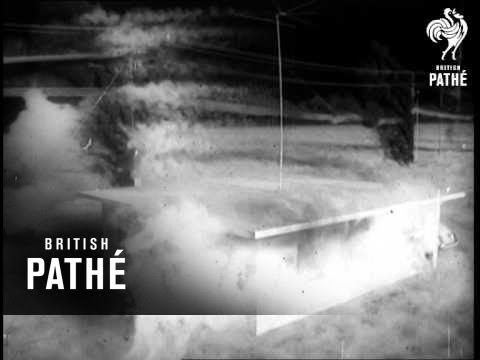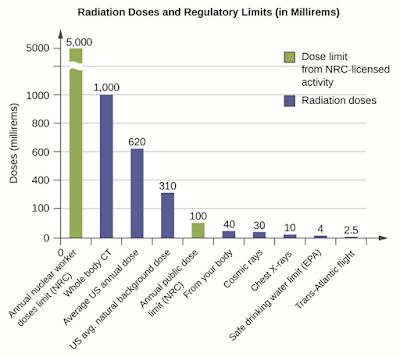
A recent poll by Pew reveals a shocking viewpoint held by a substantial percentage of Americans, a particularly concerning viewpoint given the ongoing military activity in Ukraine and Washington's nonstop sabre rattling.
The latest edition of its American Trends Panel was conducted between March 7th and March 13th, 2022 and involved 10,441 randomly selected U.S. adults who respond to Pew's self-administered web survey. The margin of sampling error for the sample is plus or minus 1.5 percentage points. In this latest survey, Pew asked a variety of questions about the United States response to Russia's military actions in Ukraine with one question being of particular concern:
Would you favour the United States taking military actions against Russia for its invasion of Ukraine even if it risks a nuclear conflict with Russia?
Here is the breakdown:
Strongly oppose – 32 percent
Somewhat oppose – 30 percent
Somewhat favour – 23 percent
Strongly favour – 12 percent
In total, 62 percent of Americans would oppose military actions against Russia if it led to nuclear war compared to 35 percent who would favour military action in this scenario. When broken down by political persuasion, 36 percent of Republicans and 35 percent of Democrats state that they would favour U.S. military action against Russia if it risked nuclear conflict which is rather surprising given that political leaning in the United States generally results in far greater differences in viewpoint.
I find it completely shocking that over one-third of Americans believe that it is worth taking military actions against Russia if it led to nuclear war. Apparently, the Cold War and the nuclear brinkmanship that could have led to the end of the human race which took place during the Cuban Missile Crisis in October 1962 have been long forgotten.
Thanks to the Atomic Archive the impact of a nuclear war on humanity can be explained so that we can understand the very, very serious repercussions of a nuclear conflict. Let's look at a sampling of the impacts:
1.) Blast effects: In the fraction of a second after a nuclear explosion, the heat generated creates a high-pressure wave composed of highly compressed air. These high velocity winds generated by the shock front along with the jump in air pressure (the overpressure) cause blast damage to structures as shown on this video from a test blast in the Nevada desert:
Ten seconds after a nuclear blast, the fireball of a 1 megaton nuclear weapon is 5700 feet across and at 50 second after the blast when the fireball is no longer visible, the blast wave has travelled about 12 miles resulting in a speed of about 784 miles per hour.
Here is a table showing the relationship between the amount of overpressure and wind speed as well as the relationship between the amount of overpressure and its physical effects on various structures and humans:
2.) Thermal radiation: Heat is the primary form of energy released by a nuclear blast. Temperatures within a nuclear explosion can reach up to 100,000,000 degrees Celsius and occur in two pulses:
a.) first pulse which lasts about one-tenth of a second and consists of ultraviolet radiation.
b.) second pulse which lasts for several seconds and carries approximately 99 percent of the total thermal radiation energy. This energy is responsible for the burning of human tissue and causes combustible materials (i.e. building materials, vegetation) to burst into flame.
Here is a photograph of a Japanese woman from Hiroshima with thermal radiation burns on her back as a result of the August 6, 1945 blast, keeping in mind that she was just one of tens of thousands of injured civilians:
In 2009, I had the privilege of visiting the Hiroshima Peace Memorial Museum in Hiroshima. When you enter the museum, this diorama showing the city before and after the August 1945 blast is one of the first of many sobering things that you see during a visit:
3.) Radiation: Several types of radiation are emitted during a nuclear detonation including gamma, neutron and ionizing radiation. These can be broken into two main types:
a.) initial nuclear radiation which arrives during the first minute after detonation in the form of gamma and neutron radiation and represents about 3 percent of the total energy released during a blast. The initial radiation decreases as one moves away "ground zero" and lasts only as long as nuclear fission occurs within the blast fireball.
b.) residual radiation comes from radioactive fallout that occurs after the blast. The half-life of these fission products range widely from seconds to years and release beta and gamma radiation as they decay.
The impact of radiation on the human body varies with the size of the dose (i.e. the amount of energy absorbed by the body) and the ability of the radioactive product to damage humane tissue. As well, certain human tissues are more sensitive to radiation; for example, bone marrow, breast and lung tissues which are exposed to radiation are more susceptible to developing cancer than brain, bone and liver tissues. Children and foetuses are more susceptible to exposure to radiation than adults.
Here is a table showing the health impacts of short-term radiation on the human body by degree of exposure in rems:
For comparison, on average, the total annual radiation exposure for an American is 620 millirems as shown here:
4.) Electromagnetic Pulse or EMP: Given the heavy reliance on electronic devices that society relies on today, this could be the most significant impact of a nuclear blast. An EMP is produced when a nuclear detonation generates gamma rays which ionize air molecules, producing positive ions and recoil electrons called Compton electors. The pulse created produces a powerful electromagnetic field which has the potential to damage or destroy electronic devices and electric power grids. A fact sheet from the Washington State Department of Health states the following:
"When "detonated," an EMP weapon (or a nuclear weapon) produces a pulse of energy that creates a powerful electromagnetic field capable of short-circuiting a wide range of electronic equipment, particularly computers, satellites, radios, radar receivers and even civilian traffic lights. Since EMP is electromagnetic energy traveling at the speed of light, all of the vulnerable electronic equipment in the detonation zone could be affected simultaneously.
A 1.4 Megaton bomb launched about 250 miles above Kansas would destroy most of the electronics that were not protected in the entire Continental United States.
Commercial computer equipment is particularly vulnerable to EMP effects. Computers used in data processing systems, communications systems, displays, industrial control applications, including road and rail signaling, and those embedded in military equipment, such as signal processors, electronic flight controls and digital engine control systems, are all potentially vulnerable to the EMP effect.
Other electronic devices and electrical equipment may also be destroyed by the EMP effect. Telecommunications equipment can be highly vulnerable and receivers of all varieties are particularly sensitive to EMP. Therefore radar and electronic warfare equipment, satellite, microwave, UHF, VHF, HF and low band communications equipment and television equipment are all potentially vulnerable to the EMP effect. Cars with electronic ignition systems/ and ignition chips are also vulnerable.
Some other notable collectors of EMP include railroad tracks, large antennas, pipes, cables, wires in buildings, and metal fencing. Although materials underground are partially shielded by the ground, they are still collectors, and these collectors deliver the EMP energy to some larger facility. This produces surges that can destroy the connected device, such as, power generators or long distance telephone systems."
An EMP is not radioactive and has no known health effects on living organisms, however, given society's reliance on the aforementioned equipment, the health effects of an EMP would ripple through the human race as health care equipment in hospitals would be destroyed, refrigeration equipment would fail as would all modern vehicles with electronics.
The EMP aspect of a nuclear detonation is so concerning that, in the near future, I will write another posting on the subject.
Let's close this posting with this map from Nuclear Secrecy showing the impact of an 800 kiloton Topol (SS-25) nuclear weapon which is currently in Russia's arsenal on New York City:
…and Los Angeles:
Given this information, I wonder how on earth one-third of Americans would be willing to enter a nuclear war with Russia over its actions in Ukraine when it is clear that there are no winners in a nuclear exchange?
You can publish this article on your website as long as you provide a link back to this page.








Be the first to comment